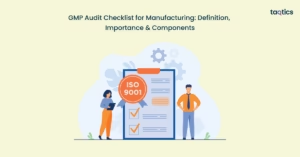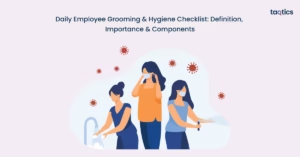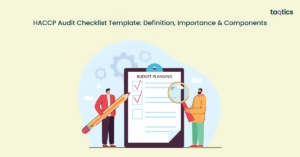Comparing Top Five Retail Execution Software: Price, Benefits, Userbase, and Drawbacks

Brands and retailers need an efficient retail execution plan in the current retail world of fierce competition. A reliable software solution that allows field personnel to do merchandising, auditing, and other in-store operations precisely is essential to retail performance. Retail execution software can increase shelf share, display compliance, and sales for brands.
Read on to learn more about a comparative analysis of five prominent retail execution software platforms, focusing on critical factors, including pricing, offered benefits, user base, and possible drawbacks. By providing retailers with an overview of these leading options, we hope to assist them in selecting the optimal solution in accordance with their financial constraints and business needs.
What is a Retail Execution Software?
Retail execution software is often referred to as retail management software. It is a technological solution that assists retailers in effectively managing their sales activities in physical locations. Companies are able to organize shop visits, monitor sales agents, get feedback from stores, track inventory levels, and guarantee that planograms and displays are followed accurately.
Among the most important features of retail execution software are the following.
- Auditing: Tools for collecting data on display compliance, planogram adherence, pricing accuracy, and other metrics via retail audits. Representatives are able to identify barcodes, take notes, photograph, and submit audit reports.
- Task Management: Platforms have task creation, assignment, and tracking capabilities to manage daily/weekly plans for reps in the field.
- Performance Monitoring: Analytics and dashboards for monitoring the performance of field reps on audits, duties, and visits and providing managers with visibility.
- Retail Merchandising: Capability to gather data pertaining to inventory levels, gaps, and shelf share, as well as to carry out merchandising operations such as constructing displays.
- Survey and Feedback Collection: Ability to poll store employees and management online.
Retail execution software ensures consistent planograms and merchandising across chains to boost brand awareness and revenue. This is accomplished by improving in-store standards. Managers utilize the information and understandings delivered by the software to enhance field strategy. Field productivity is increased as a result of improved coordination and transparency. It serves as a critical operational enabler for brands when adopted appropriately.
Criteria for Comparison Between Retail Execution Software
When assessing retail execution software platforms, companies must consider several crucial factors in order to arrive at an informed decision. The following criteria have been chosen for a comparative analysis of the leading retail execution tools.
-
Price
For most businesses, the pricing structure and total cost of ownership are critical determinants. Pricing tiers for retail execution platforms vary according to the number of users and the features offered. While some charge per-user licenses, others offer pricing at the enterprise level. By comparing the pricing models, the most economical solutions can be identified.
-
Benefits
There can be substantial variation in the features and efficacy exhibited by retail execution platforms. Brands can ascertain the solution that most closely corresponds to their requirements by evaluating the extent to which audit, task management, analytics, and other functionalities are integrated. Particular advantages provided also contribute to the factoring.
-
User Base
Market adoption of the software can be discerned from the characteristics and scales of its user base. Platforms that boast a greater number of users serve as an indication of extensive trust and reliance on the proposed solution. Understanding the clientele of the vendor can assist in determining whether or not the tool meets the requirements of your brand.
-
Drawbacks
It is critical to possess an understanding of the potential drawbacks or limits of platforms, as no software product can be flawless. By comparing any compromises or drawbacks that users have reported, brands can avoid purchasing options that are not optimal for their needs.
Assessing these four facets offers an in-depth and holistic perspective on the comparison of retail execution platforms. Although brand-specific priorities may vary, by analyzing these criteria, organizations can determine which retail execution software is most suitable for their field teams and operations. The solution must be in line with value drivers due to the substantial investment
Comparative Analysis of Top Five Retail Execution Software
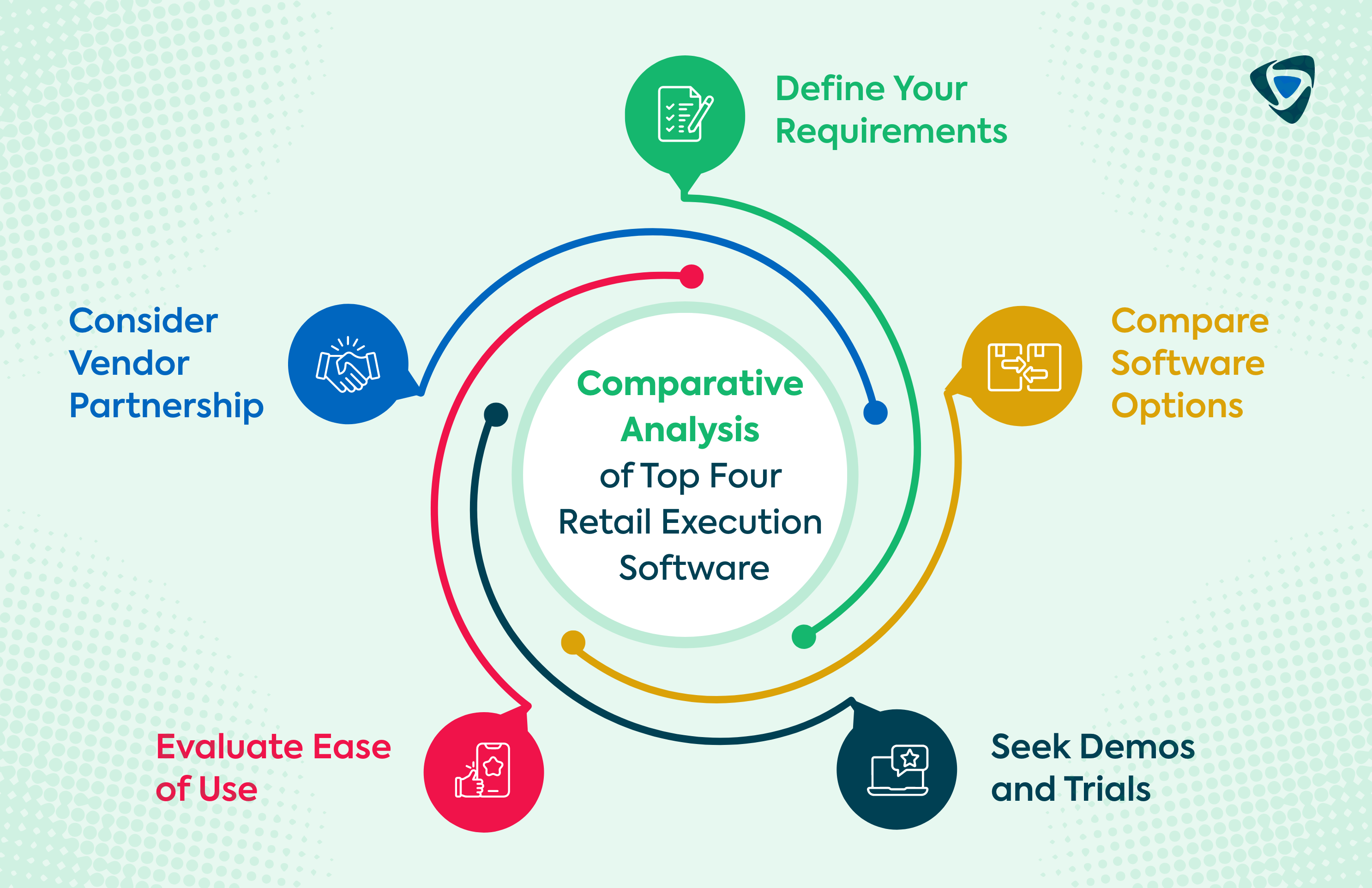
Taqtics |
| Price Comparison – Taqtics‘ operation management system ensures compliant, secure, consistent, and scalable operations. The pricing for this software is affordable. To get more information about the pricing details, it is best to connect with Taqtics’ experts. |
Benefits
|
| User Base – The operation management software is designed to simplify retail and restaurant operations. It is designed to meet the needs of all types of retail and restaurant businesses, from individuals and small-sized to medium-sized enterprises. |
Drawbacks
|
Repsly |
| Price Comparison – Enterprise plans of Repsly are priced per user per month, with pricing spanning from $29 to $65 per user per month, depending on the plan’s features. The exorbitant expenses incurred by large field teams might discourage lesser firms. |
Benefits
|
| User Base – Prominent CPG and pharmaceutical companies, including L’Oréal, PepsiCo, and Nestle, utilize Repsly and commend its capacity to increase in-store quality and revenue. Its comprehensive feature set contributes to its widespread adoption among major enterprise brands. |
Drawbacks
|
Kantar Retail iQ |
| Price Comparison – Kantar Retail iQ offers distinct pricing structures for its various modules. Monthly expenses can approach $15,000 or more when multiple modules are included. While flexibility aids in cost management, expenditures accumulate. |
Benefits –
|
| User Base – Global FMCG companies such as P&G, J&J, and Kraft Heinz implement Kantar Retail iQ in grocery stores, pharmacies, and retail chains. The value of advanced analytics is substantial. |
Drawbacks –
|
APT Osprey |
| Price Comparison – Very competitively priced, APT Osprey has three tiers based on required capabilities, ranging from $1,500 to $3,000 per month. The premium plan provides a cost-efficient alternative. |
Benefits –
|
| User Base – Prominent users of APT Osprey include the luxury, tobacco, and pharmacy sectors, which derive substantial advantages from its specialised capabilities. |
Drawbacks –
|
StoreForce |
| Price Comparison – StoreForce employs a per-user license pricing model, whereby the monthly cost varies from $50 to $100 per user. Additionally, they provide unlimited usage plans that offer brands with sizable field teams enhanced value for their investment. StoreForce’s pricing structure renders it remarkably cost-effective for brands of small to medium-sized brands. |
Benefits –
|
| User Base – Prominent retailers operating in various sectors, including consumer packaged goods, home improvement, and others, leverage StoreForce to facilitate uninterrupted retail operations for their field staff. Customers commend the software for its ability to optimize in-store standards and ensure consistent execution across all locations. |
Drawbacks –
|
How to Select the Most Suitable Retail Execution Software?
Selecting retail execution software is crucial to your field strategy and operations. It can be hard to choose the right one due to the many alternatives available. You want a future-proof solution but don’t overbuy things you won’t need.
How should brands approach this critical procurement procedure? How can one ascertain which platform will facilitate consistent in-store excellence and yield the highest return on investment? The following is a systematic procedure for assessing and selecting retail execution software that is customised to your specific needs.
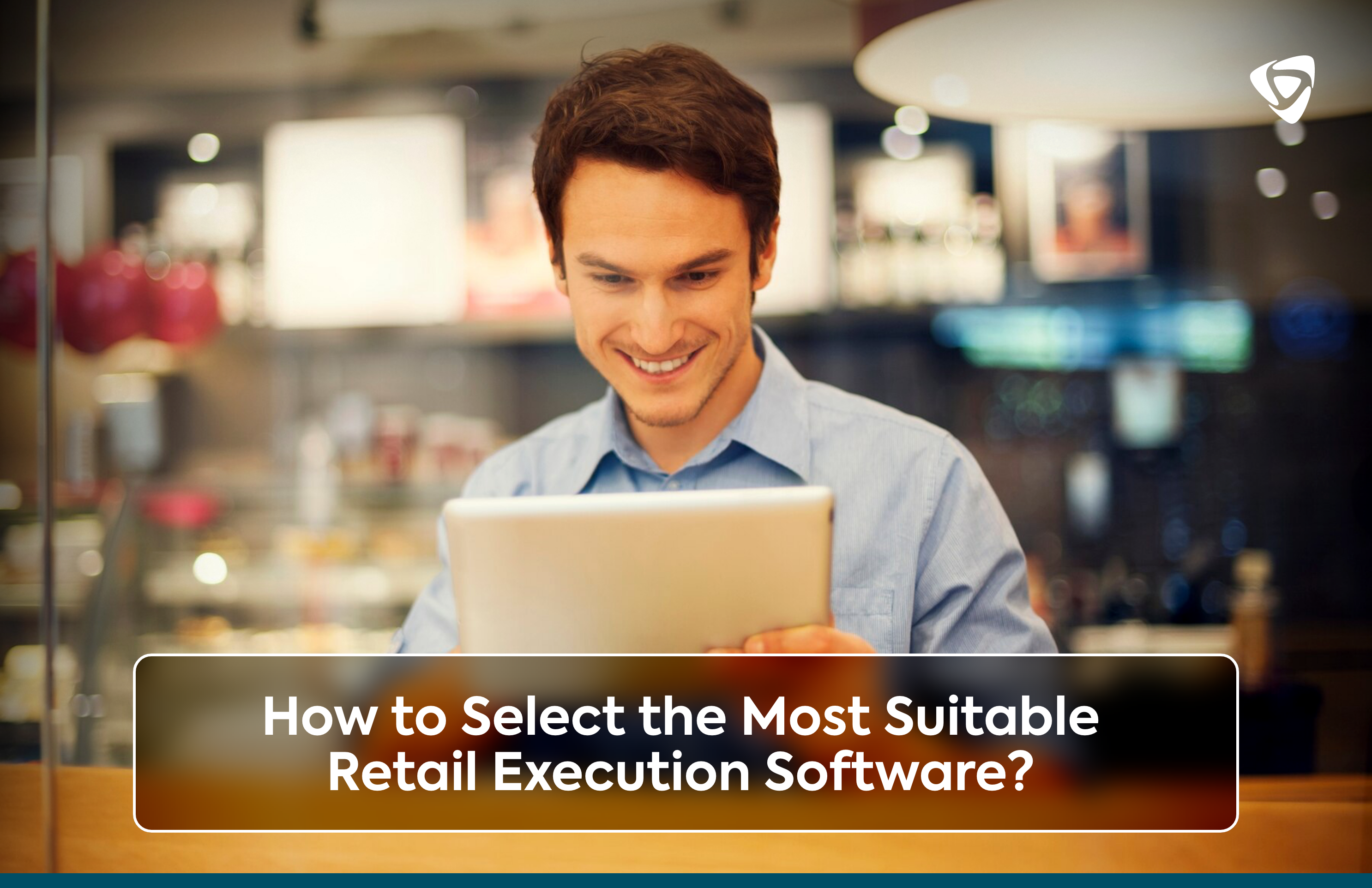
-
Define Your Requirements
Assess your current retail execution challenges and objectives with great care. Document the capabilities required to address issues such as inconsistent merchandising, ineffective audits, and lack of visibility into field operations. Also, specify the reporting, analytics, and integration requirements. It will generate criteria against which solutions can be assessed. Prioritize essential features over desirable ones.
-
Compare Software Options
Explore the leading retail execution software platforms that meet your specific needs. Condense a list of vendors whose fundamental functionality you require. When comparing solutions, consider their pricing models, the capabilities they provide, their technological assets, and comparable clients or use cases. Construct a spreadsheet for side-by-side analysis in order to assess available options impartially.
-
Seek Demos and Trials
Schedule demos and hands-on trials with your shortlisted vendors. Whether the platform’s features and user experience live up to your expectations can be determined by physically examining it. Ensure that critical decision-makers experience the product. Utilize authentic sample data to assess the efficacy of trials.
-
Evaluate Ease of Use
Evaluate the software’s usability and intuitiveness, with a particular focus on its suitability for field representatives who may lack technological proficiency. The adoption of complex platforms will hinder users. Examine the learning resources and training offered to assist with onboarding and ongoing usage.
-
Consider Vendor Partnership
Choose a vendor who is not only a software provider but also a potential long-term strategic partner. Examine their post-purchase support model, client success resources, and implementation strategy. Choose individuals who are actively involved in the success of your retail execution.
The investment in retail execution software selection is substantial. By conforming to the aforementioned structured approach to conducting comprehensive due diligence, you will be able to enhance your field execution capabilities by selecting the most suitable technology.
What are the Future Trends in Retail Execution Software?
Here are the future trends in retail execution software:
AI and Advanced Analytics:
As an emerging trend, more comprehensive AI and predictive analytics are being integrated. Retail execution platforms will progressively incorporate image recognition, natural language processing, sentiment analysis, and predictive algorithms into their operations. It will augment suggestions for optimising implementation. More analytics will be automated, accessible, and in real-time.
Digital Schematics:
Retail execution software will incorporate sophisticated 3D schematics, digital floor plans, and virtual simulations as essential components. Field teams will have the capability to assess and engage with digital depictions of store layouts and planograms when formulating merchandising strategies. It increases both pre-work and in-store productivity.
Integration and Automation:
Enhancing the level of integration among retailer systems, retail execution platforms, and other software tools will facilitate increased automation in field workflows. As a result, process automation, data sharing, notifications, task triggers, and report compilation will require fewer manual steps. Thus, field resources will be able to concentrate on value-adding tasks.
Enhanced Mobility:
Apps for retail execution will be optimized for offline functionality and the most recent mobile devices. Augmented reality and wearable integration are anticipated to become prevalent features. It will enable field representatives to implement retail strategies more efficiently and precisely.
The implementation of these technological developments will empower brands to implement retail strategies with greater intelligence and effectiveness. Brands must select future-ready retail execution vendors who are currently innovating on these capabilities to capitalize on them. Assessment of product roadmaps will be crucial. An appropriate resolution will prove to be a valuable asset in the long run.
Conclusion
Brands must approach the evaluation and selection of a retail execution platform with great care, as it is a highly valuable yet intricate investment. This comparison demonstrates that there are numerous aspects to thoroughly evaluate, including pricing, user experience, features, and vendor partnership models. In the end, the optimal software is the one that most closely corresponds to the needs and goals of your field operations in order to facilitate consistent in-store execution.
Although a pricey, feature-rich system such as Repsly or Kantar Retail iQ may appear appealing, exercising self-control is necessary to prevent excessive spending. Clearly define requirements, conduct a comprehensive analysis of available options, and select the solution that offers the highest ROI for your financial resources and operational activities. Partner with the provider committed to your retail execution success. Explore Success Stories of Retail Businesses Using Operation Management Software to learn how all-in-one solutions have helped streamline operations, improve efficiency, and drive growth across various sectors

